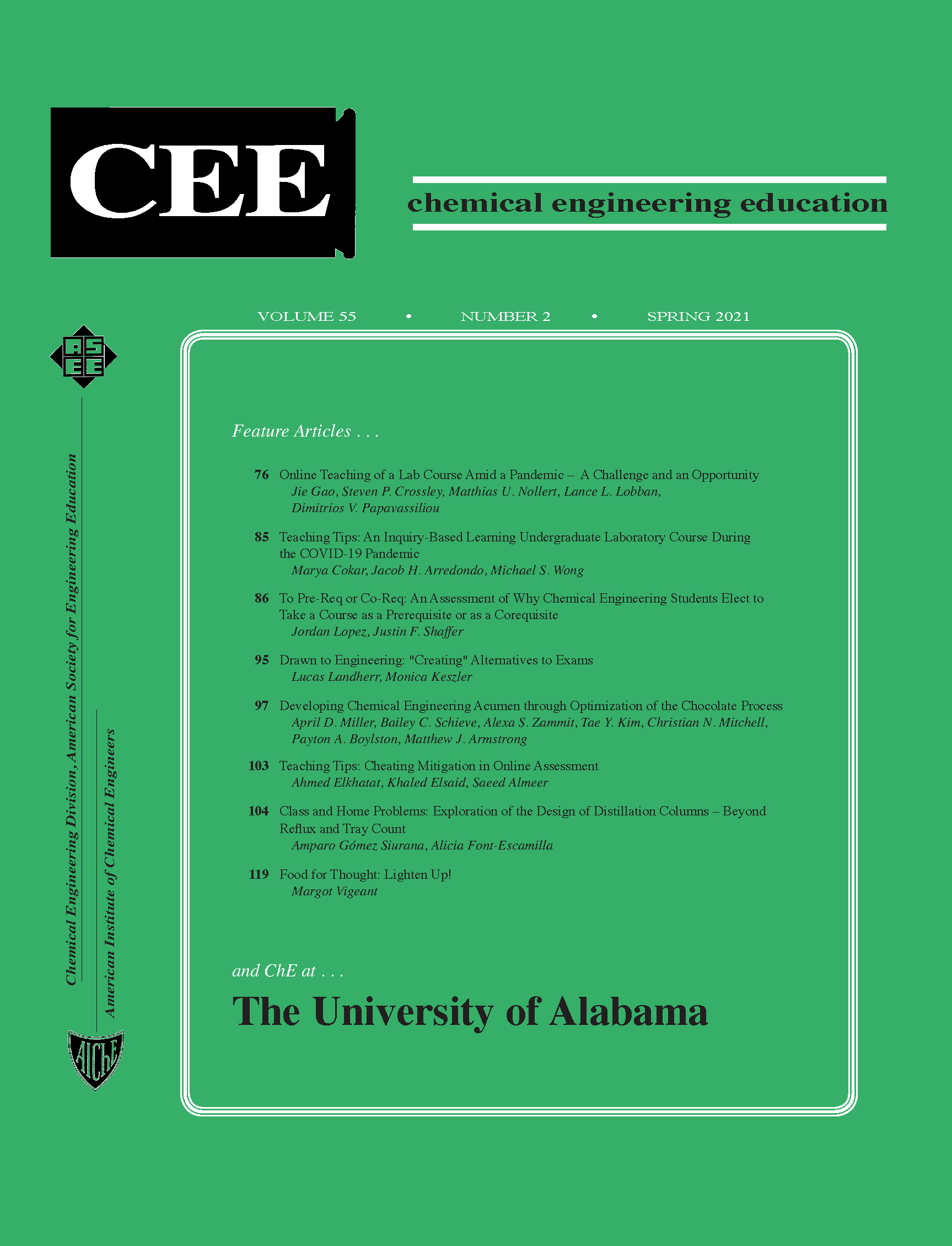Lighten Up!
DOI:
https://doi.org/10.18260/2-1-370.660-126428Abstract
Bubbles are loved and loathed by chemical engineers. We seek them in order to boost contact surface area between liquid/vapor phases in distillation and stripping, and dread their unexpected occurrence in pipes or tanks. Bubbles turn out to be key to the structure and flavor of foods from angel food cake to zwieback. The incorporation of bubbles into baked goods is leavening, and leavening consists of three parts. First, there’s the incorporation of nucleation sites into the dough. Then there’s the generation (or further incorporation) of gas to grow the nucleated bubbles. Finally, there’s the thermal expansion of the bubbles to give us airy and flavorful breads and cakes. Let’s take a brief tour through the chemical engineering of tasty bubbles!


